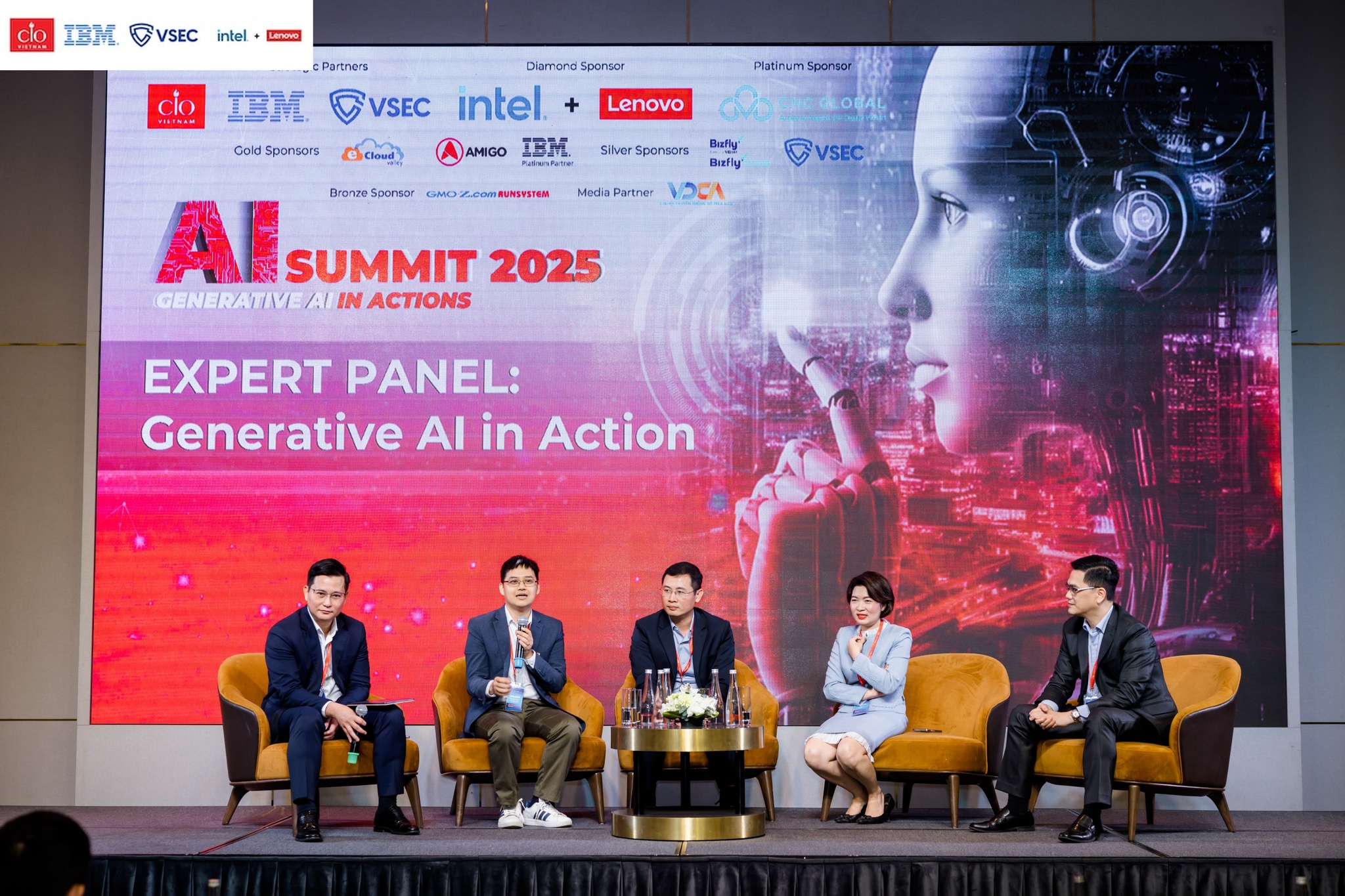GenAI has permeated every aspect of business operations, posing a critical question: How can enterprises leverage the power of GenAI not just to blindly chase a trend, but to achieve genuine growth forward?
At the “Generative AI in Action” seminar hosted by CIO Vietnam, Mr. Ngo Xuan Bach, Deputy Director of AI Division at FPT Smart Cloud, alongside other senior leaders from various industries including banking, F&B, has taken a deep dive into 3 main themes that unlock business potential:
- How is GenAI being applied in practice?
- Which enterprises have undergone transformative shifts through AI Agents and AI Factories?
- What is the roadmap to evolve from AI-Integrated to AI-Native, making technology a core competency?
How GenAI is Being Applied in Practice
While 2023 was a period of experiment and observation, 2024 signified a significant transition as GenAI is deeply integrated into business operations. In marketing, GenAI is not just generating content – it thinks like a marketer. These AI systems can produce thousands of pieces of content, tailor tone and voice to specific audiences, automate the A/B testing process, and provide optimization recommendations based on customer behavior. For example, a bank in Vietnam has used GenAI to personalise email marketing, resulting in a 38% increase in open rates and a 21% rise in conversion rates.
At the event, Mr. Ngo Xuan Bach stated that “FPT does not use AI to replace employees; we build and develop AI solutions to liberate them from mundane tasks, allowing them to focus more on creativity and customer engagement.” In customer service, AI Agents are more than just scripted chatbots. They understand context, remember customer interaction history, and even respond with empathy. More importantly, these AIs are directly integrated with CRM systems, enabling VIP customer recognition, customer behaviour tracking, and personalised product recommendations for different customer segments. In operations and internal processes, GenAI is becoming a “digital assistant” for every employee. Tasks like contract drafting, report writing, email responses, and meeting summaries are all AI-assisted, saving 1-3 hours of work daily. This not only reduces manual workload but also frees up time and space for employee creativity.

Moving beyond isolated applications, many businesses are advancing to higher corporate levels by building AI Factories – where data, algorithms, and human expertise converge to create continuous value. For example, a leading Asian technology corporation developed an internal GenAI platform that allows any employee to create AI applications simply by identifying their needs in natural language. This system now handles over 4,000 tasks daily, boosting overall organisational efficiency by 25%.
AI Agents are now prevalent not just in customer service but also in other departments such as legal (contract error checking), finance (cash flow analysis and forecasting), HR (CV screening and onboarding), and R&D (market research synthesis and product blueprint). All pioneering enterprises are now viewing AI as a “strategic partner” rather than just a tool.
Notably, this transformation extends beyond technology adoption to encompass a shift in corporate culture. Successful organisations share a common trait: top leadership actively participates in the AI journey, fosters a culture of learning, embraces the trial-and-error process, and encourages employees to proactively apply AI in their daily work.
The business journey from AI-Integrated to AI-Native
Many businesses have implemented AI at the “Integrated” level, an easy first step to incorporate AI tools into existing processes to improve efficiency. However, at this level, AI remains fragmented – each department uses its own tools without an overarching strategy. Consequently, AI enhances speed and cost-effectiveness but does not yet drive breakthrough innovation in the organisation.
In contrast, the “AI-Native” level involves restructuring operational processes, data organisation, and internal AI capability development. At this stage, AI is not just a tool to be used but to live and grow within your organisation. A notable example is A US logistics company that implemented a GenAI-powered delivery coordination system integrated with weather data, schedules, and real-time information. This strategy reduced operational costs by 18% and increased daily delivery time by 2 hours. This example also demonstrates how an AI-Native enterprise works: AI not only improves but redefines how the organization operates and creates value.
To shift from “applying AI” to “becoming an AI-native business”, organisations need to focus on 5 fundamental pillars:
- Leadership must commit to and drive the AI strategy – it cannot be solely delegated to IT or Data departments.
- Data must be treated as a strategic asset – clean, interconnected, and well-structured.
- Employees need to be “AI-literate”- from capabilities in applying AI to collaborative mindsets with AI.
- A corporate culture that encourages trial and error and AI skill development should be fostered, preventing AI from being confined to safe zones.
- Businesses need to build an ecosystem including technology partners, AI experts, and AI sharing communities, therefore, no one can go far alone.
Enterprises that truly transform through AI do so not because they have better tools, but because they have a different mindset: viewing AI as a “new core competency” that requires significant development, from technical infrastructure to organisational culture. Looking at the leading corporation in the GenAI wave, there is a common thread: they invest not just in tools, but in mindset. GenAI is not the destination; it is a stepping stone for businesses to redesign their operations, value creation, and future reputation. The journey from AI-Interested to AI-Integrated to AI-Native is prolonged with multiple processes. It begins not just with technology – it begins with leadership commitment and a long-term vision.
AI is not just a tool; it is transforming to become a new operational platform. Successful businesses are not those with the most AI tools, but those that understand how to use AI most effectively and efficiently. They know how to use AI to reshape how they work, make decisions, and create value. And the AI journey should start from today!





